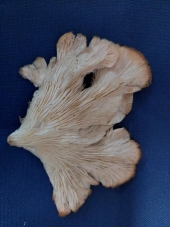




 1
1




Projects, plans, resources - now on the Permies.com digital marketplace.
Try the Everything Combo as a reference guide.




 1
1




Freakin' hippies and Squares, since 1986




 3
3




Check out Redhawk's soil series: https://permies.com/wiki/redhawk-soil




 3
3





 3
3





 2
2








 1
1




Check out Redhawk's soil series: https://permies.com/wiki/redhawk-soil





 2
2




when you're going through hell, keep going!

 2
2




Check out Redhawk's soil series: https://permies.com/wiki/redhawk-soil
 5
5








Meg Mitchell wrote:
The phrasing sounds an awful lot like the warnings I've seen about solanum nigrum ("black nightshade") being poisonous under "some growing conditions" when it is perfectly safe if ripe and the actual issue is widespread confusion with other, actually poisonous, nightshades that happen to produce black fruit.
 2
2




Check out Redhawk's soil series: https://permies.com/wiki/redhawk-soil
 2
2




Güneş Bodur wrote:
Meg Mitchell wrote:
The phrasing sounds an awful lot like the warnings I've seen about solanum nigrum ("black nightshade") being poisonous under "some growing conditions" when it is perfectly safe if ripe and the actual issue is widespread confusion with other, actually poisonous, nightshades that happen to produce black fruit.
Actually poisonous? I do remember eating Solanum Nigrum fruit (which is black), and I didn't have any poisoning symptoms.
Ken W Wilson wrote:I would go back and collect the mushroom you found on pine. If you can ID it as oyster or another edible, you might try growing it from spores or cloning it. You might be able to take a piece of infected log home.
John Saltveit wrote:There are people who get upset stomach when they eat a mushroom that grows on, say, hemlock, instead of spruce or fir. That doesn't mean that it is straight poisonous. It may be that they should just eat a bit the first day, which is a good idea with any new mushroom. It could be that they have a compromised digestive system. When you look at most peoples' processed food and non-exercise habits, that might be most people. It's not only about the food itself. Americans have culturally undervalued the importance of digestion as a process, and suffer for it.
John S
PDX OR
when you're going through hell, keep going!


 3
3








Joseph Lofthouse wrote:I ate about a cup of raw, very ripe, solanum nigrum berries. Six hours later, I experienced the worst stomach pain since my appendix was removed 30 years previously.
I had eaten a few all summer long without ill effects. Perhaps the poison is in the dosage?
when you're going through hell, keep going!





 2
2




 5
5




Check out Redhawk's soil series: https://permies.com/wiki/redhawk-soil
 3
3




 1
1




Check out Redhawk's soil series: https://permies.com/wiki/redhawk-soil




 3
3




Check out Redhawk's soil series: https://permies.com/wiki/redhawk-soil
 4
4




John Suavecito wrote:Symbiotic mycorrhizal mushrooms grow near the tree, helping each other to grow. Live tree.
_by_Jerzy_Opio-a-_WikiMedia.org.jpg)
_caps-ectomycorrhizal_by_P.D._Orton-_WikiMedia.org.jpg)
 2
2








Carrie Zoll wrote:Most edible mushroom like hardwoods, from what I know they don’t grow on pine trees.





Rachel Brylawski wrote:Wondering how easy or worthwhile it is to inoculate mycorrhizal fungi around pine trees?
Rachel Brylawski wrote:Considering how might more fully make us of the 2 acres or so...




Best luck: satisfaction
Greatest curse, greed








Check out Redhawk's soil series: https://permies.com/wiki/redhawk-soil
 1
1




Thekla McDaniels wrote:Hola, Tomas
I tried the link and got nothing 🙁. What is the name of the species that is so good at breaking down lignin? Thanks
I have several acres of ponderosa pine, lots of needles under the tree, and had 20 cut down that were too near the house. I would love to get fungal action of all kinds




Best luck: satisfaction
Greatest curse, greed




Thekla McDaniels wrote: I thought lignins were present in all wood, and more in the hardwoods than soft woods.
Am I confused?
Did I miss some thing?
Why do lignin metabolizes get mentioned here as if only some woods had them?





|
I have discovered my inner Beavis through interpretive dance. I learned it from this tiny ad:
The new permaculture playing cards kickstarter is now live!
https://www.kickstarter.com/projects/paulwheaton/garden-cards
|






